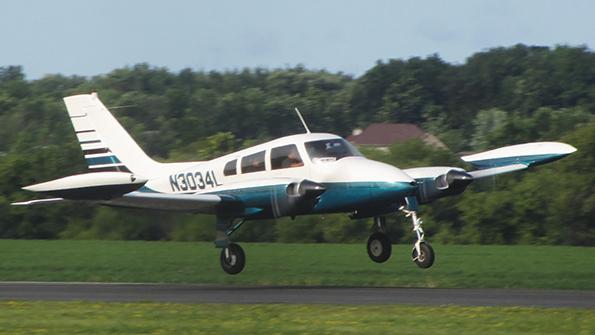
My house sits in open country with a big sky overhead and two airports— one a joint military-commercial operation, the other an executive general aviation facility—nearby. The satisfying consequence is a daily air show viewed from my office balcony.
And while participants reduced in number noticeably with the onset of the COVID-19 pandemic, there are still regular appearances by military transports, jetliners, business jets, full-throated fighters, helicopters, spray planes and even an occasional U.S. Marine Corps V-22 Osprey.
I’m happily distracted often, Bushnell monocular always at the ready.
The other day, I spotted a light twin approaching with singularly rakish wingtip tanks. Ah! A 310. I’d not seen one of those since . . . well, I couldn’t remember when. That seemed surprising, since Cessna delivered 5,500 of them during the model’s 26-year production run. And while the last came off the Wichita line in 1981, when properly maintained, such aircraft live long, productive lives.
Pondering that, I further realized that piston twins in general rarely join my air show, a head-scratcher considering the tens of thousands of Piper Navajos, Senecas and Aztecs, 300- and 400-series Cessnas, Beech Dukes and Barons, along with Shrikes, Aerostars, et al., the airframers produced.
According to the General Aviation Manufacturers Association (GAMA), industry output in the 1970s averaged 2,000+ new piston twins annually. By contrast, that figure was down to 150 per year in the past decade.
So did piston “multi-” owners and operators advance to turboprops? After all, there were plenty of those available from Beech, Cessna, Piper, Rockwell, Mitsubishi, Fairchild and Piaggio, among others. The GAMA numbers seem to support that possibility. Back in the ’70s, airframers delivered about 3,200 executive turboprop models; in the most recent decade, the total increased to 5,500, a bump of more than 70%.
However, that new, higher count includes single-engine turboprops, a category essentially nonexistent five decades ago. When you subtract those for an apples-to-apples comparison, it turns out aircraft-makers delivered just over 1,000 twin turboprops in the recent 10-year period, or two-thirds fewer than during that earlier decade. In fact, Beech King Airs are the only ones left in GAMA’s production count, and last year Textron turned out just 62 of those.
Unsurprisingly, most former OEMs have either disappeared or simply abandoned twin-prop production altogether. Why? For myriad reasons, it appears.
The initial assumption that two engines provide extra safety and performance was shown to be a commonly held canard by no less a general aviation advocate than the late aviation editor Richard Collins. After poring over accident data, he found little difference between most high-performance piston singles and twins in the rate of mishaps. Moreover, when properly maintained and supplied with the appropriate and sufficient fuel, engines—whether piston or turbine—rarely fail.
As for performance and systems, the newer singles pretty much mirror those of any twin counterparts. Or surpass them. Garmin’s award-winning Autoland system, for example, is so far available only on turbine singles; Cirrus equips its aircraft, all singles, with an emergency parachute. Moreover, fuel systems on twins are necessarily more complex than on singles. And should an engine fail on a twin, pilots rusty in engine-out procedures will have their hands full, whereas a lost engine on a single presents the pilot with one course of action.
And then, of course, there’s the matter of cost. Obviously, a second engine represents increased operating and maintenance expense over similar aircraft with half that number. It’s impossible to put an exact figure on the differential, but the premium can be 40% or more. Indeed, according to Business & Commercial Aviation’s 2020 Operations Planning Guide, the variable costs of a Beech King Air C90GTx versus Daher’s high-performance, single-engine TBM 940 are approximately double.
In addition, Lance Toland, a leading aviation insurance broker, reports the cost of coverage for high-end twins and turboprops is “most definitely” a factor, if it is available at all. He says many lenders require insurers to pay them for any such loss, regardless of circumstances. That “breach of warranty” provision has chilled insurers’ enthusiasm for covering those aircraft.
Finally, one major consultant noted there are many cost-effective options available to potential twin-prop aircraft users including jet cards, fractional networks and clubs, along with competitively priced used light jets. Consequently, he says, twins have become “screwdrivers in a hammer world.”
He characterized the “multi” segment as undergoing a “devolution,” whose turnaround is dubious . . . along with participation in my air shows.






Comments
Jet A1 is a different matter however, widely available and cheaper; also I believe many/most of the diesel engines certified for aviation will run on Jet A1 or 'road' diesel. And that is ubiquitous.